We Are Not Powerless Against Climate Change
World Wetlands Day February 2, 2019
and the Ramsar Convention
by Maureen Lahiff
Our San Francisco Bay is not only a designated Important Bird Area, it is a Wetland of
International Importance under the Convention on Wetlands, often called the Ramsar
Convention. This treaty on the conservation and sustainable use of the world’s wetlands was
put into final form on February 2, 1971 at a meeting in Ramsar, Iran.

The Convention defines wetlands broadly, as “areas of marsh, fen, peatland or water, whether
natural or artificial, permanent or temporary, with water that is static or flowing, fresh,
brackish or salt, including areas of marine water the depth of which at low tide does not exceed
six metres.” The Convention places wetlands in a comprehensive and holistic context, but it
does recognize the key role of birds, as its full name is the Convention on Wetlands of
International Importance especially as Waterfowl Habitat. By waterfowl, the Convention
means any bird species ecologically dependent on wetlands. BirdLife International is one of the
five major partners.
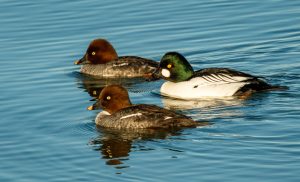
The materials for World Wetlands Day 2019 emphasize the role of wetlands in “stabilizing
greenhouse gas emissions and blunting the impacts of climate change.” Wetlands, especially
peatlands, are natural absorbers of carbon. More carbon is sequestered in peatlands than in
the world’s forests. As sea levels rise, wetlands can dampen storm surges and protect near-by
lands from flooding. As the materials point out, 60% of the earth’s population live and work
along coastlines. In sum, “Wetlands are a natural solution.”
Worldwide, we have lost about 70% of our wetlands, and the loss since 1970 has been
dramatic. Although we have lost 90% of the San Francisco Bay’s wetlands, we have been saved
from the disaster of a largely filled-in Bay, thanks to the courage and commitment of Esther
Gulick, Kay Kerr, and Sylvia McLaughlin, who founded Save the Bay in 1961.
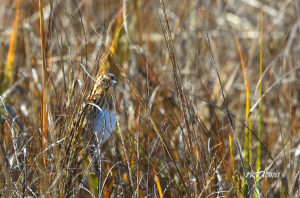
The creators of the Ramsar Convention express confidence that wetlands can be conserved
and restored within a context of sustainable development. I would go even further: unless
wetlands are protected and restored, we cannot be successful in the sort of development
envisioned for the world’s people in the Millennium Development Goals and their successor
the Sustainable Development Goals.
Almost 90% of the United Nations’ member states are contracting parties to the Convention.
Yes, the United States is one; formally contracting on December 18, 1986. (Ronald Reagan was
president at the time.)
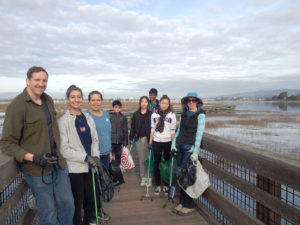
As I write this on January 21, 2019, I have just spent a morning picking up trash along San
Leandro Bay at the northern end of MLK Regional Shoreline, as part of East Bay Regional Parks
MLK Day of Service. That Monday was a gorgeous day, sunny, not too windy, and
extraordinarily clear after a front had moved through. There were rafts of resting ducks on the
water. A Spotted Sandpiper flew across, landed on the rocky shore, and proceeded to walk
along foraging with its characteristic bobbing of the back half of its body, much to the delight of
all.
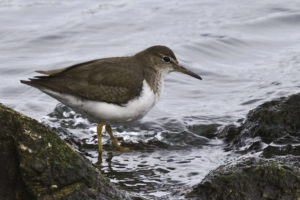
It was the sort of experience that makes me proud to be a citizen of Oakland, with a very mixed
crowd of young and old, all picking up trash washed up by a king tide. It was not only important
work, it was work that made me feel hopeful, though maybe not optimistic. But yes, we are not
powerless against climate change, and wetlands are the key.
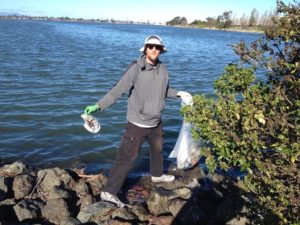
So, come on out with GGBA, Save the Bay, or your local parks. Pick up trash, remove invasive
species, or plant natives raised from local seed. Take a moment to appreciate the birds using
the Bay, all the creatures that rely on it, and its vital role in mitigating climate change.
What is good for the birds is truly good for the planet.
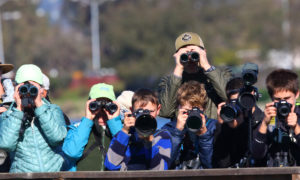
Maureen Lahiff regularly volunteers for SF Bay coastal clean-ups and restoration work. To introduce others to the Bay and its birds, she leads many bayshore GGBA field trips and teaches GGBA classes. She also participates in winter bird censusing for the Richardson Bay Audubon Center.
Sources and Resources
www.worldwetlandsday.org
www.ramsar.org
GGBA volunteer opportunities: https://goldengatebirdalliance.org/volunteer/
